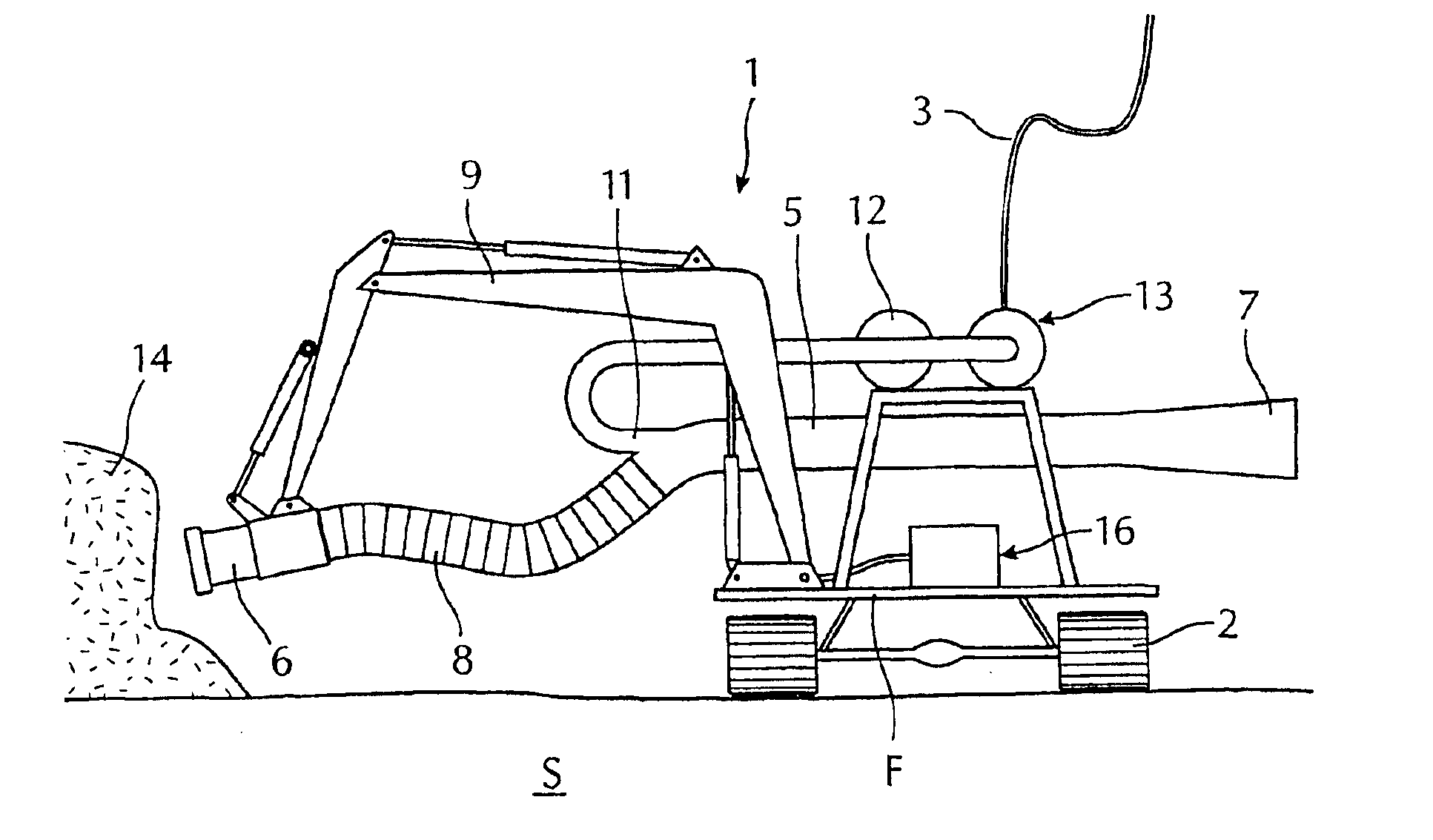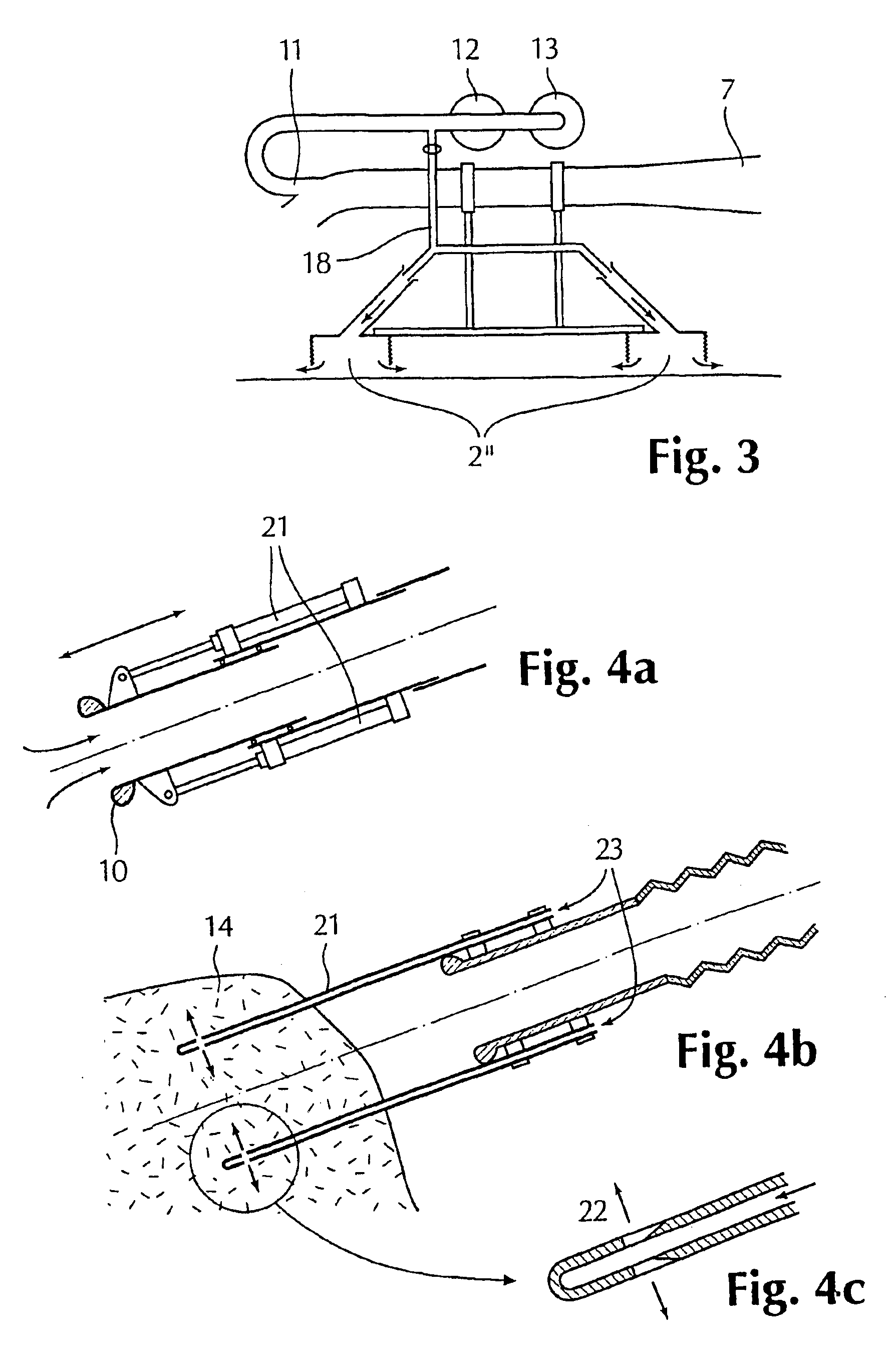Method and device for subsea dredging
a technology for subsea dredging and submerged water, which is applied in the field of methods and devices for subsea dredging, can solve the problems of large surface vessels, high power consumption of specially designed excavators, and large power consumption of special equipment, and achieves the effects of easy movement, easy control, and versatility in us
- Summary
- Abstract
- Description
- Claims
- Application Information
AI Technical Summary
Benefits of technology
Problems solved by technology
Method used
Image
Examples
Embodiment Construction
FIG. 1 shows a device 1 designed to move on the sea bottom S with the aid of belts 2 powered from the surface through a cable 3. The device comprises a tubing 5, preferably with a flexible section 8, said tubing having an inlet end 6 and an outlet end 7. To the tubing an ejector nozzle 11 is attached, said nozzle being supplied with water from a pump 12 powered by an hydraulic unit 13. All of said equipment are supported by a chassis F which again is supported by the belts 2. It is preferred that the tubing 5, when it includes a flexible section 8, further comprises a manipulator 9 which is able to move the tubing within certain degrees of freedom. In FIG. 1 the manipulator 9 consists of a multi-link arm controlled by means of an hydraulic unit 16. The device is adapted to transport sediments 14 including rocks of a size up to the diameter of the tubing 5 from one site to another, by the pressure gradient in the tubing set up by the ejector nozzle 11, providing a “vacuum from left t...
PUM
 Login to View More
Login to View More Abstract
Description
Claims
Application Information
 Login to View More
Login to View More - R&D
- Intellectual Property
- Life Sciences
- Materials
- Tech Scout
- Unparalleled Data Quality
- Higher Quality Content
- 60% Fewer Hallucinations
Browse by: Latest US Patents, China's latest patents, Technical Efficacy Thesaurus, Application Domain, Technology Topic, Popular Technical Reports.
© 2025 PatSnap. All rights reserved.Legal|Privacy policy|Modern Slavery Act Transparency Statement|Sitemap|About US| Contact US: help@patsnap.com



